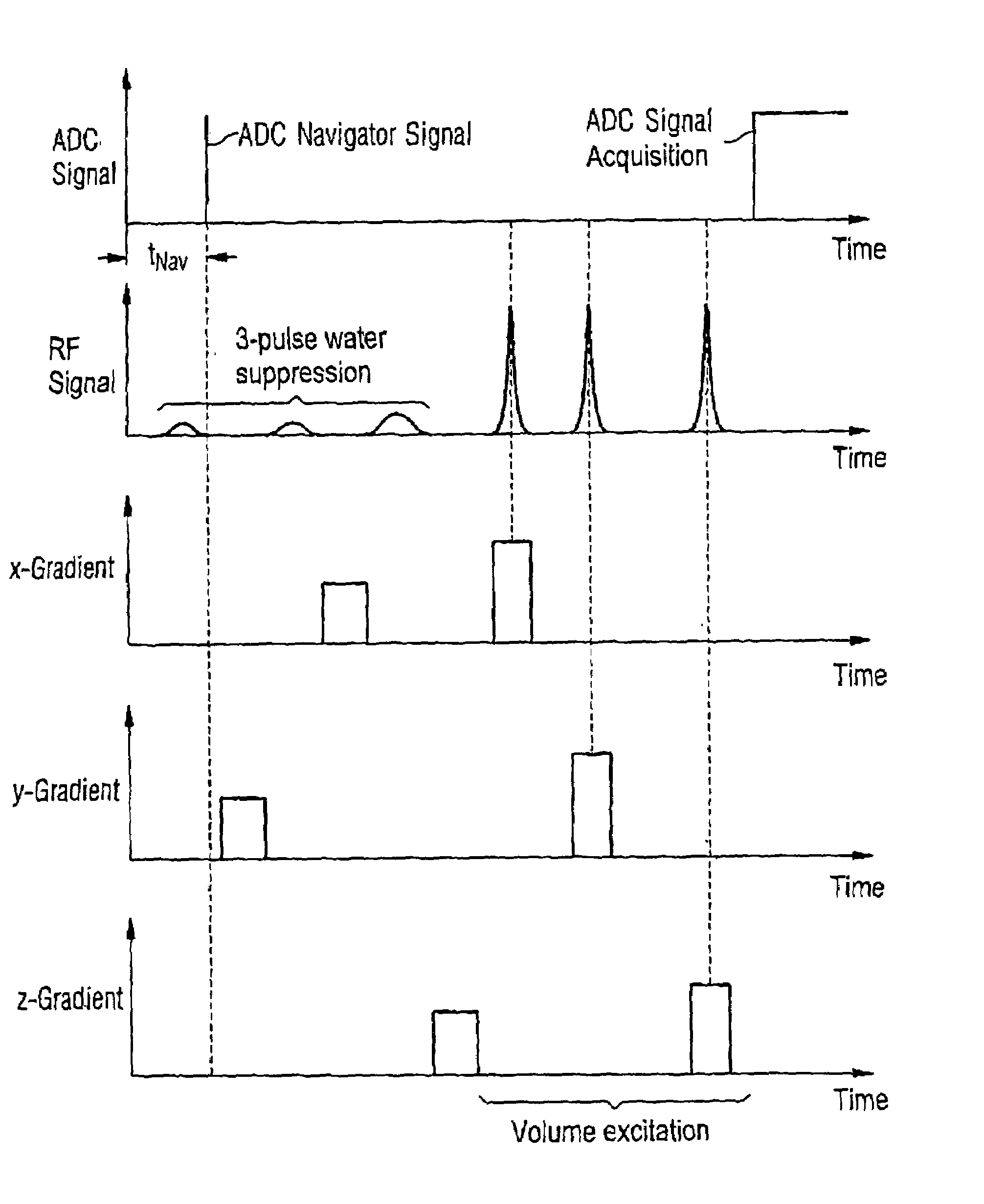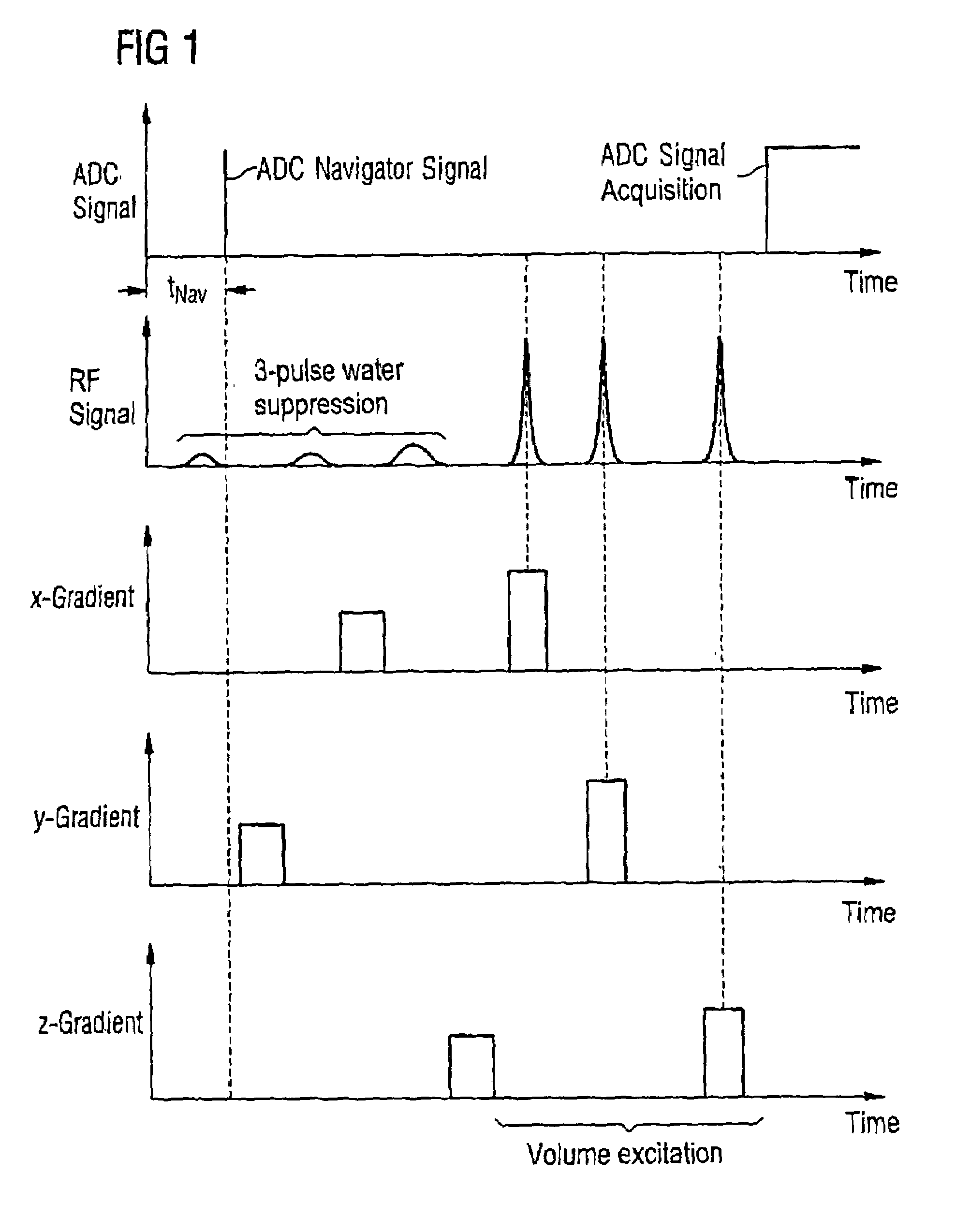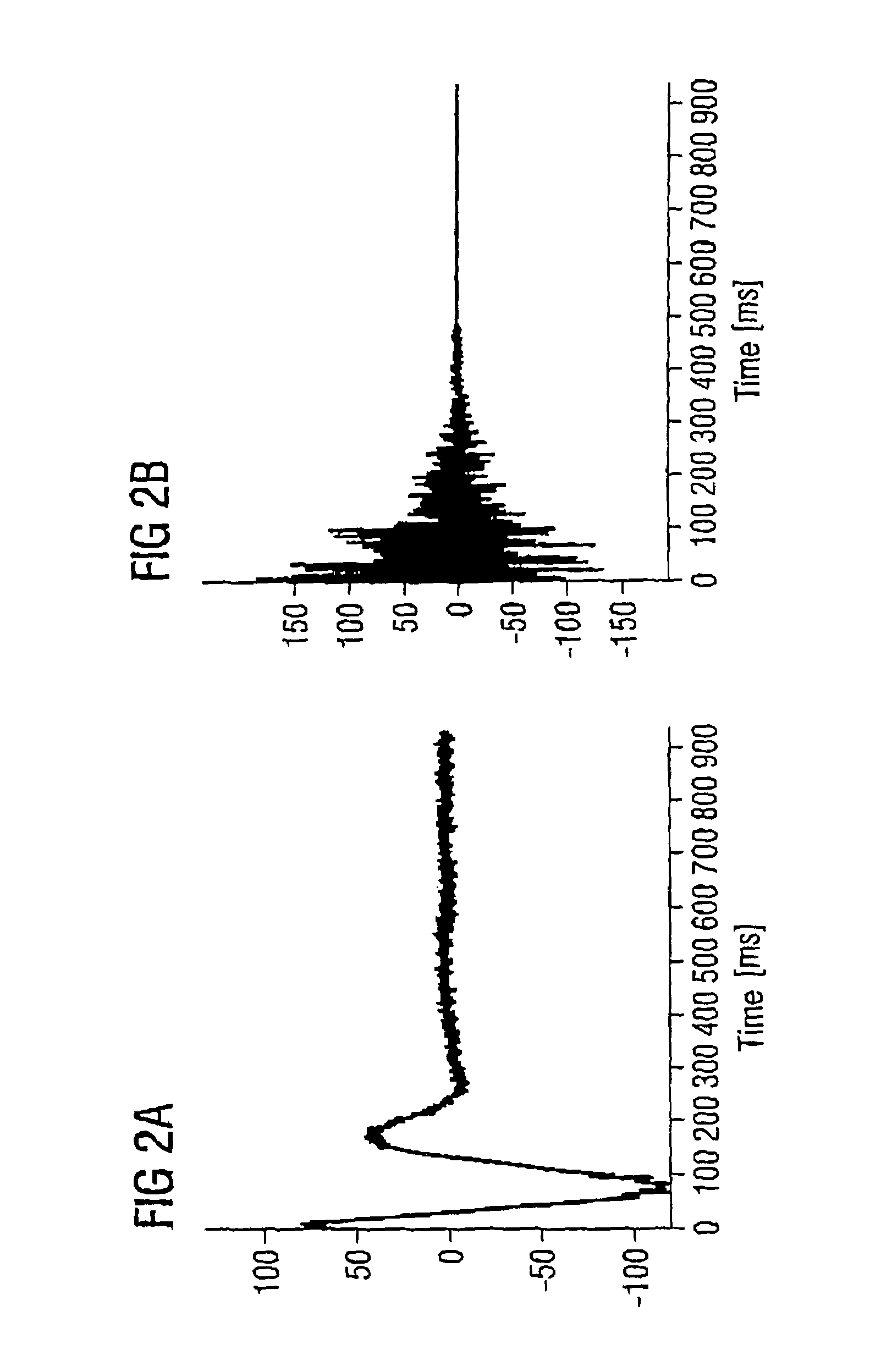Method and MR apparatus for dynamic frequency detection in MR spectroscopy
a dynamic frequency detection and spectroscopy technology, applied in the field of magnetic resonance spectroscopy, can solve the problems of significant, negative influence on the quality of the overall spectrum, and change of resonance frequency up to a few hz per hour, and achieve the effect of easy diagnosis and correction
- Summary
- Abstract
- Description
- Claims
- Application Information
AI Technical Summary
Benefits of technology
Problems solved by technology
Method used
Image
Examples
Embodiment Construction
[0039]Examination of tissue by means of magnetic resonance spectroscopy supplies a damped magnetic resonance signal (MR signal) that oscillates periodically with the Lamor frequency, known as the free induction decay (FID), as shown for example in FIGS. 2a and 2b. The FID signal is, roughly, the electromagnetic response to a radio-frequency excitation pulse that was previously radiated into the tissue under examination. As mentioned above, the irradiated RF excitation pulse represents a frequency spectrum in the MHz range that extends over the expected resonance range of the metabolites. In proton spectroscopy, this is a range of 10 ppm at approximately 60 MHz; the spectral width in phosphorus spectroscopy is approximately 30 ppm at 26 MHz; and in 13C spectroscopy the resonances in the spectra are distributed over a range of 200 ppm at approximately 16 MHz.
[0040]The FID signal itself is a chronologically dependent response signal in whose frequency curve all the resonances of the ex...
PUM
| Property | Measurement | Unit |
|---|---|---|
| magnetic field | aaaaa | aaaaa |
| frequency | aaaaa | aaaaa |
| frequency | aaaaa | aaaaa |
Abstract
Description
Claims
Application Information
 Login to View More
Login to View More - R&D
- Intellectual Property
- Life Sciences
- Materials
- Tech Scout
- Unparalleled Data Quality
- Higher Quality Content
- 60% Fewer Hallucinations
Browse by: Latest US Patents, China's latest patents, Technical Efficacy Thesaurus, Application Domain, Technology Topic, Popular Technical Reports.
© 2025 PatSnap. All rights reserved.Legal|Privacy policy|Modern Slavery Act Transparency Statement|Sitemap|About US| Contact US: help@patsnap.com



